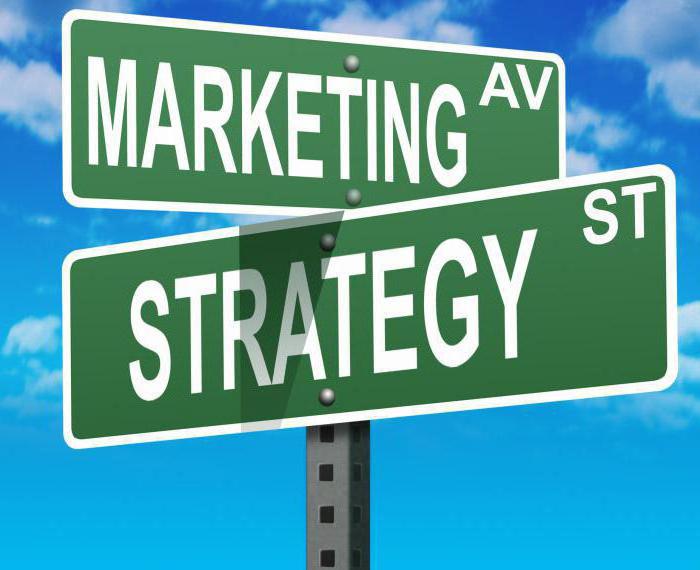Most enterprises, in order to achieve tremendous heights in development, necessarily create strategies. No well-known company could not exist in the modern expanses of the market, if not adhered to them.
What is a marketing strategy?
Marketing strategy is one of the elements of the enterprise’s work plans. It is aimed at the development, manufacture and delivery to consumers of goods and various services that will meet their needs.
Also, the marketing strategy can be described as a large-scale plan to achieve the main goals of the company. Its development is based on the study of the target market sector, the creation of a marketing mix. Be sure to determine the time frame of the main events and resolve financial issues. It is considered the foundation of any advertising strategy. No marketing company does not bypass the study of the situation that develops in the market.

The primary goal of marketing is to develop and implement a marketing strategy by any means. The main strategies are as follows:
- Attracting buyers.
- Product Promotion Plan.
Without these two main components marketing will not exist.
Also, a marketing strategy is characterized as a set of different principles. Thanks to them, the company forms marketing goals and is able to organize their implementation in the market.
Any marketing strategies should accurately outline the sections of the market where the company will focus its forces. They will differ in preference and profitability. For each of the segments you need to develop your own marketing strategy. This takes into account the following: goods, prices, promotion of goods, as well as sales. The marketing strategy of any company is always fixed by an individually prepared document "Marketing Policy".
Types and Analysis
The work of any company is based on certain principles. Necessarily carried out marketing analysis strategies. Its main tasks are as follows:
- To study the solvent demand for the product, be sure to pay attention to the markets for sales.
- Also substantiates the plan for the manufacture and sale of goods of the appropriate volume and range.
- Analyze the factors that form demand elasticity for a product, an assessment of the degree of risk of unclaimed products is also taking place.
- Assess the ability of a product to compete with other products and find reserves to increase competitiveness.
- Develop a plan, tactics, methods and tools that create demand and stimulate the sale of goods.
- Assess the sustainability and efficiency of production and sale of goods.
For a company to reach heights, not only its own, but also the best trend marketing strategy should be carefully studied. Example: Schulco, Coca-Cola, etc.

To create an effective strategy, you must first study its types. So, the following classification is common:
- The strategy of conquering a part of the market or expanding this share to optimal performance. It involves access to the necessary data, indicators of the norm and the mass of profit. At the same time, it becomes much easier to achieve greater profitability and production efficiency. The conquest of the selected segment is carried out due to the appearance and introduction of a new product on the market.
- Innovation strategy. It means the production of goods that have no analogues.
- Innovation Simulation Strategy.It is based on combining all the new products of competitors.
- Product differentiation strategy. It is based on the improvement and change of familiar products.
- Cost reduction strategy.
- Waiting strategy.
- Consumer individualization strategy. The most common at the moment among manufacturers of equipment that has a production purpose.
- Diversification strategy.
- Internationalization strategy.
- Cooperation Strategy. Based on the beneficial cooperation of a certain number of enterprises.
How are marketing strategies developed? Researching
Development of a marketing strategy takes place in several stages:
- The first - market research. At this stage, you should determine the boundaries of the market, the share of the enterprise in this segment. You also need to evaluate the volume and trends of the market. It is imperative to conduct an initial assessment of the competitive level.
At this stage, the external macroeconomic environment is necessarily analyzed. The following is being studied:
- Macroeconomic factors.
- Political factors.
- Technological factors.
- Social factors.
- Factors of an international nature.
- Second phase - assessment of the current state of the company. It includes a mandatory analysis:
- Economic indicators.
- Production capacities.
- Marketing.
- Portfolios.
- SWOT analysis.
Another important point is forecasting.
- Third stage - competitors are analyzed, the ability of an enterprise to surpass them is assessed. This stage includes the main actions:
- Discovering competitors.
- Calculation of rivals strategy.
- Definition of their main goals.
- Establishing strengths and weaknesses.
- The choice of a competitor whom you will attack or ignore.
- Assessment of possible reactions.
- Fourth stage - set the goals of the marketing strategy. First of all, it is necessary to evaluate actual problems, determine the need for their solution, and put forward advanced tasks in more detail. Only then do they arrange the goals in hierarchical order.
- Fifth stage - dividing the market into segments and choosing the right ones. In addition, consumers and their needs are examined in detail. The methods and the period of exit to the segments are also established.
- Sixth stage - there is a development of positioning. Specialists give recommendations on the management and movement of communications in marketing.
- Seventh stage - an economic evaluation of the strategy is carried out, control instruments are also analyzed.
Any plan and development should be based on real facts, for this it is necessary to organize marketing research that will accurately tell you what to focus on. These studies should be carried out regularly, as the market is changing, and consumer preferences too.

The purpose of marketing research is to create an information and analytical base with which managerial decisions are then made. But to study the individual components, individual schemes are created. Depending on the components of marketing, there is a marketing strategy. Example: study of products, prices. Next, a general outline will be given. It was developed and successfully used by many companies. Currently, it is also very often used in practice.
Marketing research is carried out in several stages:
- The problems and objectives of the research are determined.
- A plan is being developed.
- It is being implemented.
- The results are processed and reported to the authorities.
Proposal of professionals
Marketing services are provided by specialists in this field. This is an activity that is associated with the study of the state of the market and the situation in it, tendencies for various kinds of changes are also determined, which allows the manager to properly build his business.There may also be other reasons for exploring the market. Marketing services include research, without which the entrepreneur will not be able to start his production and begin to manufacture a new product.

What is a marketing policy?
The meaning of marketing policy is to determine the concept, composition, elements and goals of the market. Marketing policy is a plan on the basis of which the entire program of the enterprise’s activities for the promotion of products and services is drawn up, it will help determine the main areas of promotion and help develop basic programs. Marketing management consists of the development of a marketing policy and its implementation.
This policy is aimed at ensuring the effectiveness of events held in the company. It is formed depending on the organization of marketing, its purpose and objectives.
Marketing policy consists of:
- Company goals and marketing.
- Marketing strategies.
- The main elements of marketing.
Elements of marketing policy:
- Product policy.
- Sales
- Promotion
- Logistics.
- Pricing.
- Informing system.
There are several types of marketing policies, it all depends on the sector in which the company is located:
- Attack policy.
- Defense policy.
- Retreat policy.
Its main goals include: increasing the volume of product sales, maximizing profits, winning the championship in the right segment.
What is meant by a diversification strategy?
The diversification strategy allows the company to identify and develop auxiliary business lines that will differ from the currently selected area.

As competition is constantly growing, this strategy is considered an acceptable tool to manage risks. It will also help to avoid focusing forces in one area of the enterprise.
If the strategy is correctly implemented, it will help to maintain the performance and income of the company during a recession or stagnation. It will contribute to increasing profitability and business efficiency, but for this it is necessary to evaluate in detail the internal resources of the enterprise, external factors and market trends.
Each marketing company identifies four types of diversification strategies:
- Horizontal It includes the purchase or development of new products that can be sold to customers or regular customers of the enterprise. The company that has chosen this strategy relies on its sales level and manufacturing technology. At the same time, risks are reduced due to an increase in product diversity.
- Vertical. It involves the promotion of the enterprise or its descent along the production chain. This strategy helps reduce the company's dependence on other people's decisions. As a result, all the most important processes are closed within one enterprise.
- Concentric (connected). It implies the expansion of production at the expense of goods or lines of business that allow more efficient use of existing technologies or resources.
- Conglomerative (unrelated diversification). It is based on the conduct of two independent business areas that do not improve each other's activities.
- International It takes the form of related or unrelated diversification.
A diversification strategy is developed in several steps:
- The strengths and current state of the business are analyzed.
- Directions for diversification are being sought.
- An assessment of the selected areas.
- The overall portfolio of the enterprise is analyzed.
Marketing Development Strategies
Development strategies are aimed at clarifying the nature of the benefits that the enterprise holds. It becomes the basis for the next strategic and tactical steps. Currently, these types of marketing strategies are distinguished:
- The strategy, in the application of which the company becomes a leader due to cost savings. It is based on performance.
- Differentiation strategy. It is based on giving the product distinctive properties.
- Specialization strategy, which is based on the concentration of the needs of the selected segment or consumers. The goal is to meet the needs of the segment. It can be based on differentiation, leadership. Thanks to this strategy, it is quite possible to take a strong place in the field chosen for doing business.
Classification of market strategies
There are three types of marketing strategies for a market:
- Undifferentiated marketing. At the same time, the company decides to neglect the differences between the segments and turns to the market as a whole with the same offer. In such a situation, the company concentrates on finding a common ground between the needs of the market. She creates products (first of all, of course, a marketing plan is being developed) that will be needed by most buyers. The company relies on the media and strives to create the perfect image of the product. This type of marketing is considered an economical option. The costs are minimal. No need for deep marketing research. The company that went this way produces products for large segments of the market.
- Concentrated Marketing. A company that opts for such marketing focuses its efforts on a large part of the market or even several segments at once. This type of marketing is associated with increased risks, as the chosen area may not live up to expectations.
For everything to go well, you need to create an accurate marketing plan and choose the right market coverage strategy. In this case, the following factors must be taken into account:
- Enterprise resources. If they are limited, then it is better to choose a concentration strategy.
- How homogeneous is the product? If the product is too uniform, then the strategy of undifferentiated marketing is suitable. If the products are diverse, but the basis is the same, then it is better to choose a differentiated marketing strategy.
- At what stage is the product life cycle? It is advisable to offer only one novelty, so as not to incur large losses with little demand. In this situation, a strategy of undifferentiated or concentrated marketing is suitable.
- What is the degree of market uniformity? If it is full of homogeneous goods and consumers have the same tastes, it is better to apply an undifferentiated marketing strategy.
- What is the strategy of competitors? It is always necessary to choose the opposite option, otherwise it can lead to negative results.
What are segmentation strategies?
The types of marketing strategies are very diverse, but the most popular is related to segmentation, which is an intermediate place between micromarketing and mass marketing. It is also called: differentiated or segmented marketing.

A segmentation strategy involves working in several segments at once. At the same time, each part is considered taking into account its needs, which allows you to focus on the needs of consumers. If market segmentation has occurred, the company can implement unique products, promotion strategies, distribution methods, set prices for each part of the market separately.
Segmentation encourages manufacturers to manufacture new products, as well as develop an existing marketing mix and advertising. It helps to correctly distribute marketing resources between different types of products. But not always and not all conditions can count on high income.
What is a leader strategy?
Types of marketing strategies are classified according to various criteria. Let’s take a closer look at marketing leadership strategies.In every market and in any industry, there is a leading company that has many competitors. There are also world leaders - companies that have been able to achieve leadership in the global market. To be ahead, you need to make a lot of efforts and recruit a good team of professionals who can create an effective work program, choose the right direction of activity.
A leadership strategy is the foundation of success for any company. On the one hand, adhering to it, the enterprise occupies a large part of the market, which leads to high profits, on the other, there is always a risk that a competitor will seek to move the leader and copy his strategy.

The situation of plagiarism can lead to a bad influence on the image of the company, which sometimes even leads to collapse. In order to maintain first position in the market, the leader should always use various types of marketing strategies, including increasing the size of the market, protecting his positions, and increasing his share in the already developed market.
One thing is clear: if the company wants to achieve heights and make big profits, you need to choose the right marketing strategy.








